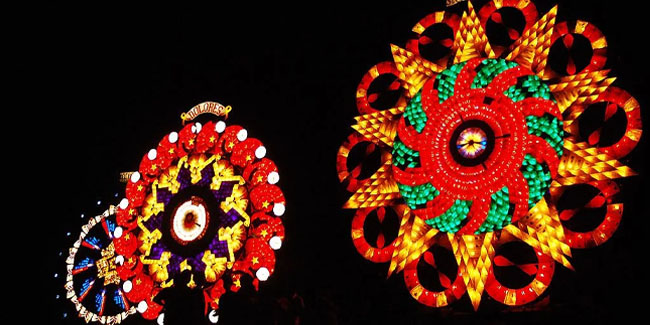Here’s what you need to know about Christmas Parol
CHRISTMAS PAROL – This article will teach you about a traditional Christmas lantern in the Philippines and its history.
A Parol is a Christmas lantern that can be used inside or outside one’s home. It is created piece by piece by careful hands of parol makers, fusing craft and craftsmanship with history and culture to celebrate the very essence of Christmas in the Philippines.
Aside from being a representation of the birth of Jesus Christ, a Christmas Parol also represents the triumph of light over darkness, the resourcefulness that is uniquely Pinoy, and the actual meaning of Christmas.

But where did this come from?
The word “parol” is derived from the Spanish word “farol” which means “lantern”. Also, the Christmas Parol refers to the star that led the Three Kings to the manger where the infant Jesus Christ was laid.
It was in the 1830s when the devout frequently organized a religious procession known as the “lubenas”, which included lights in the shapes of fish called “asan”, a cross, and 12 others, which stood for Jesus Christ and his 12 apostles.
Later on, Francisco Estanislao – a salt dealer from Bacolor, Pampanga – is credited with creating the first enormous Christmas Parol in 1908, which is considered to have been the start of the parol-making industry in the country.
Francisco used “papel de Japon” (also known as Japanese paper) and bamboo strips in order to make a conventional five-pointed star parol that was illuminated with candle or “kalburo”. Since that time, Filipinos have created their own Christmas lanterns using 6- to 8-pointed stars that have been adorned with a variety of materials.
It was in the 1940s when the first battery-powered lamps with incandescent bulbs were created. Lantern maker Rodolfo David created a rotor mechanism for parols back in 1957.
You may also visit – Why Do We Give Gifts Every Christmas?
The parol was utilized for Barangay Santa Lucia’s annual submission in the Giant Lantern Festival in San Fernando, Pampanga, which the said barangay subsequently won from 1957 to 1959.
His parol used revolving steel drums with wires on hairpins in order to program the light and music. This parol served as the model for the commercial electric parols known as “Parul Sampernandu” that started to be introduced in 1964.
